#union soldier
Explore tagged Tumblr posts
Text

Union soldier with family, 1861-65.
Library of Congress
74 notes
·
View notes
Text

Union Cavalry Soldier with Pistol in Holster, from Indiana, 1861-5
Photo by Tappin's Photograph Art Gallery (American, active 1860s)
In the Met Museum
13 notes
·
View notes
Text


Union Soldier. Charcoal and ink. Tea Stained Paper. 2024.
#oc artist#traditional art#artists on tumblr#original character#character art#character design#civil war#american civil war#union soldier#historical#historical art#illustration#charcoal#pen and ink#my art#art
7 notes
·
View notes
Text
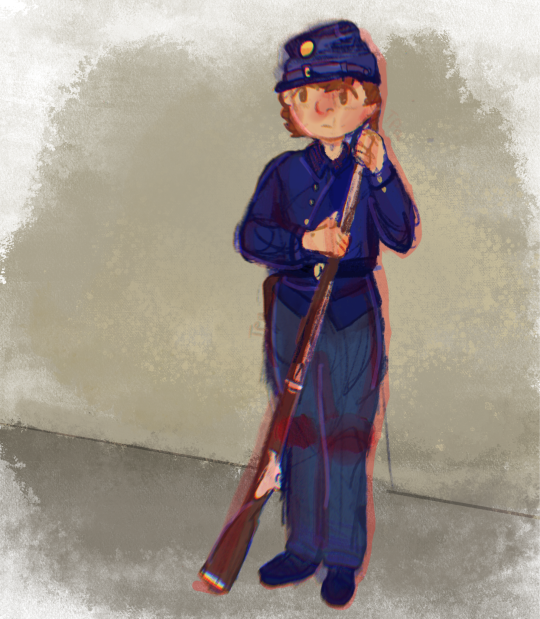

MY BOYY GABRIEL, hes my first ever "offical" Civil war OC.
Irish brigade member, and Patriotic Irishman. Hes super chill and fun, dies during Gettysburg sadly 😭
Did not get to see his Soon-to-be wife and child, or his family. Loved the banjo, and Just being social
#drawingoc#american civil war#acw#historical#historical oc#union soldier#oc#american history#irish brigade#IDK WHAT ELSE TO TAG#history#???
8 notes
·
View notes
Text

Made some art for my fan fic, 'Life After Death'. Not to proud of the back and foregrounds, but I'm living for how I did the shading on the horse. I have so much trouble with horses, so I'm very happy with how he looks.
In this AU, Alfred is part of the 123rd Illinois Mounted Infantry, part of the Lightning Brigade. He's a very unlucky man, having been thrown of his injured horse and hit in the face by an artillery shell.
Want to know why a shell would be flying so low? Check out the story. ;)
#artists on tumblr#ao3 link#art#hetalia#cw: gore#mild gore#tw blood#cw blood#hws america#hetalia america#america#american civil war#fan fic stuff#lightning brigade#hatchet brigade#horse#horse and rider#union#union soldier#digital art#procreate
2 notes
·
View notes
Text
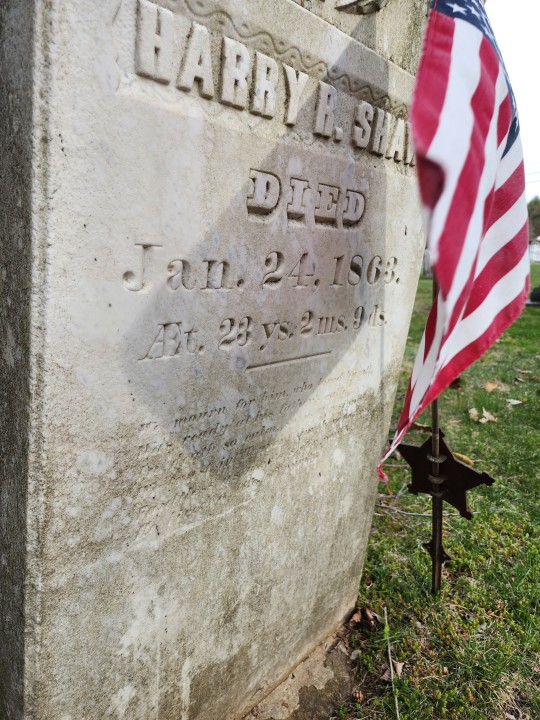



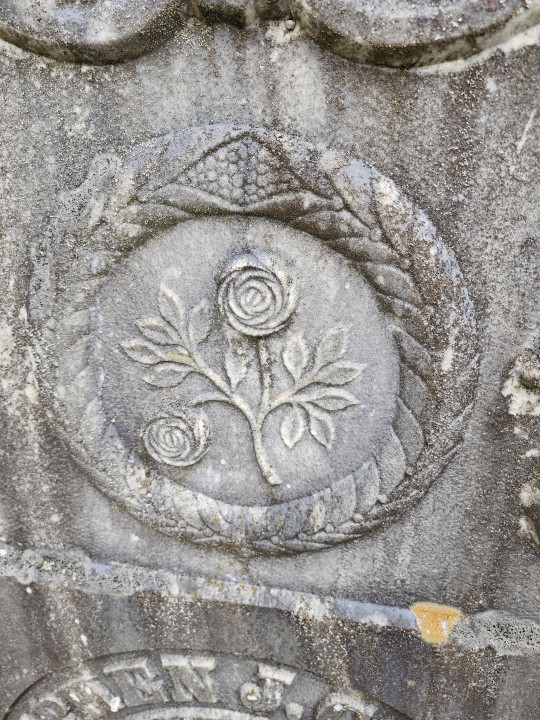



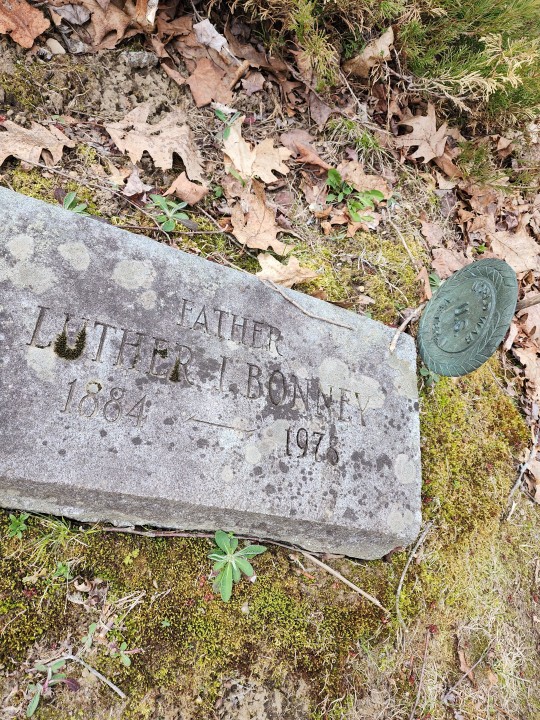
4 notes
·
View notes
Text


I finished up this tauren union soldier commission - comes with a sepia variant.
The background is a altered stock photo by Alex Hockett which I found here: https://unsplash.com/photos/green-tree-with-white-dog-during-daytime-TwMLYN_CMT4
#american civil war#tauren#soldier#union soldier#furry#anthro#musket#minotaur#fantasy#world of warcraft#warcraft#wow#horde#drawing#fantasy art#art#artist#commission
3 notes
·
View notes
Text

A Package From Home
#muttball#photography#travel photography#union soldier#army guard#image by muttball#military soldiers#guard duty
9 notes
·
View notes
Text
The Original Memorial Day Charleston South Carolina: The Washington Post reporting
On May 1, 1865, thousands of newly freed Black people gathered in Charleston, S.C., for what may have been the nation’s first Memorial Day celebration. Attendees held a parade and put flowers on the graves of Union soldiers who had helped liberate them from slavery.
The event took place three weeks after the Civil War surrender of Confederate Gen. Robert E. Lee and two weeks after the assassination of President Abraham Lincoln. It was a remarkable moment in U.S. history — at the nexus of war and peace, destruction and reconstruction, servitude and emancipation.
But the day would not be remembered as the first Memorial Day. In fact, White Southerners made sure that for more than a century, the day wasn’t remembered at all.
It was “a kind of erasure from public memory,” said David Blight, a history professor at Yale University. ➖ Left in the wake of the Confederate evacuation were the graves of more than 250 Union soldiers, buried without coffins behind the judge’s stand of the Washington Race Course, a Charleston horse track that had been converted into an outdoor prison for captured Northerners. The conditions were brutal, and most of those who had died succumbed to exposure or disease.
In April, about two dozen of Charleston’s freed men volunteered to disinter the bodies and rebury them in rows of marked graves, surrounded by a wooden, freshly whitewashed fence, according to newspaper accounts from the time.
Then, on May 1, about 10,000 people — mostly formerly enslaved people — turned out for a memorial service that the freed people had organized, along with abolitionist and journalist James Redpath and some White missionaries and teachers from the North. Redpath described the day in the New-York Tribune as “such a procession of friends and mourners as South Carolina or the United States never saw before.”
The day’s events began around 9 a.m. with a parade led by about 2,800 Black schoolchildren, who had just been enrolled in new schools, bearing armfuls of flowers. They marched around the horse track and entered the cemetery gate under an arch with black-painted letters that read “Martyrs of the Race Course.” The schoolchildren proceeded through the cemetery and distributed the flowers on the gravesites.
“When all had left,” Redpath wrote, “the holy mounds — the tops, the sides, and the spaces between them — were one mass of flowers, not a speck of earth could be seen; and as the breeze wafted the sweet perfume from them, outside and beyond, to the sympathetic multitude, there were few eyes among those who knew the meaning of the ceremony that were not dim with tears of joy.” ➖ But Then:
“By the middle and end of Reconstruction, the Black folks of Charleston were not creating the public memory of that city.”
The portrayal of the Civil War and its aftermath was controlled in the South by groups such as the United Daughters of the Confederacy and the Ladies’ Memorial Association, as well as Confederate veterans, Blight said.
“The Daughters of the Confederacy were the guardians of that narrative,” said Damon Fordham, an adjunct professor of history at The Citadel, a military college in Charleston. “And much of that was skewed toward the Confederate point of view.”
A 1916 letter written by the president of the Ladies’ Memorial Association in Charleston, replying to an inquiry about the May 1, 1865, parade. “A United Daughters of the Confederacy official wanted to know if it was true that blacks and their white abolitionist friends had engaged in such a burial rite,” he wrote. “Mrs. S.C. Beckwith responded tersely: ‘I regret that I was unable to gather any official information in answer to this.’”
In the 1880s, the bodies of the Union soldiers, the “Martyrs of the Race Course,” were exhumed and moved to Beaufort National Cemetery. The horse track closed shortly after that, and the 60 acres of land became Hampton Park, named for Wade Hampton III, a Confederate general and Charleston native who became governor of South Carolina in 1876. Hampton enslaved nearly 1,000 people before the war, and his governorship was supported by the Red Shirts, a White paramilitary group that violently suppressed the Black vote.
By the end of the century, no vestige of the racecourse, the cemetery or the 1865 parade remained. ➖
Over Time:
More spring graveside memorials followed the one in Charleston. Several occurred in towns across the country in the spring of 1866, and many of these places — such as Columbus, Miss., whose commemoration became annual — claim to have held the original Memorial Day observance.
Officially, The Nation Recognizes Memorial Day As Having Started In Waterloo, N.Y.
In Charleston, the freed people didn’t have the power to develop an annual tradition after 1865. But the city now recognizes itself, regardless, as the holiday’s birthplace.
“On May 1, 1865, a parade to honor the Union war dead took place here,” reads a South Carolina state historical marker erected in Hampton Park in 2017. “The event marked the earliest celebration of what became known as ‘Memorial Day.’”
0 notes
Text
Welcome to The Pass!
That is the name of the new novel I had the pleasure of Co-Authoring with long time friend and school mate, Allan Krummenacker. Together we managed to create a different type of supernatural novel. Well, rather than me trying to explain it, why don't you read what Kirkus Reviews has to say!
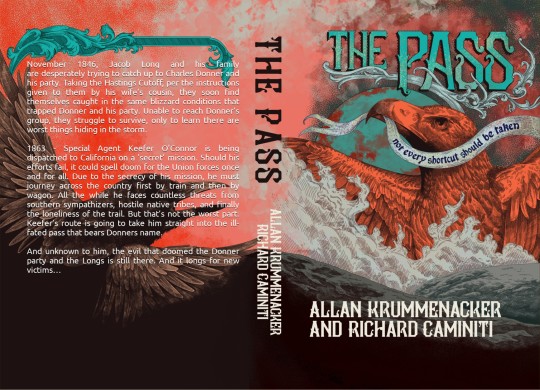
Find it at Amazon and see for yourself!
#supernatural#vampires#zombies#chinese#irish#civil war#1863#jiang shi#spy#war department#secret service#Keefer O'Connor#Lafayette Baker#Lansford Hastings#Donner Pass#union soldier#confederate soldier#skinwalker#miwok indians#indians#indie publishing
1 note
·
View note
Text
2K notes
·
View notes
Text

Luftwaffe Field Division Troops, Eastern Front 1942-45.
#ww2#german soldiers#luftwaffe#eastern front#wwii#war history#world war 2#second world war#world war two#1940s#world war ii#wwii era#photography#germen#soldiers#miltary#winter#germany#Soviet union#tumblr#tumbler#ussr#world#war#2#world war#ii#ww2 germany#wars#history
216 notes
·
View notes
Text
You know sometimes I think too long about where the fuck the Kaminoians got millions of clone uniforms and armor sets and I start having some real question about how the hell the clones were a complete secret for over a decade
#sw meta#kamino#clone wars#tcw#especially when that decade started with the demilitarization of the Trade Union after the Invasion of Naboo#like none of the garment workers making combat blacks to go under armor had any questions about the up in production????#no comment from the armor foundries suddenly getting an order for millions of human soldiers?????#and if the answer is ‘they made everything in house’ I don’t fucking believe you no they didn’t
217 notes
·
View notes
Text

me too, bucky.
only 3 of the invaders in rivals and i have very little hope for the addition of any others... alas. if they add a jim hammond skin for the human torch though i will buy it immediately. My life in your hands, NetEase. or maybe 'my money in your hands' would be more accurate. (classic bucky skin too please, i want nothing more)
i miss the invaders
man idk WHAT happened with steve in this drawing but it's alright. just a sketch. you will NEVER catch me drawing marvel rivals designs at their full level of detail (unless maybe i want to draw something serious). those designs were NOT made to be drawn.
#marvel#marvel rivals#namor#namor mckenzie#Sub-Mariner#namor the sub mariner#how many tags do u have man#bucky barnes#james buchanan barnes#winter soldier#captain america#steve rogers#invaders#the invaders#dude i miss jim and toro so bad give me them back please#spitfire & union jack too i love reading the reunions :)
57 notes
·
View notes
Text
Was rambling to my dad about Various stormlight things in the car this morning and eventually got tired of calling bride four ‘bridge four’. He now knows them as ‘Kaladin’s labour union friend soldiers’.
#kaladin stormblessed#bridge four#stormlight archive#Labour union friend soldiers lmao#The kind of things I say when I’m trying to describe Moash’s arc in under 60 seconds
67 notes
·
View notes
Text
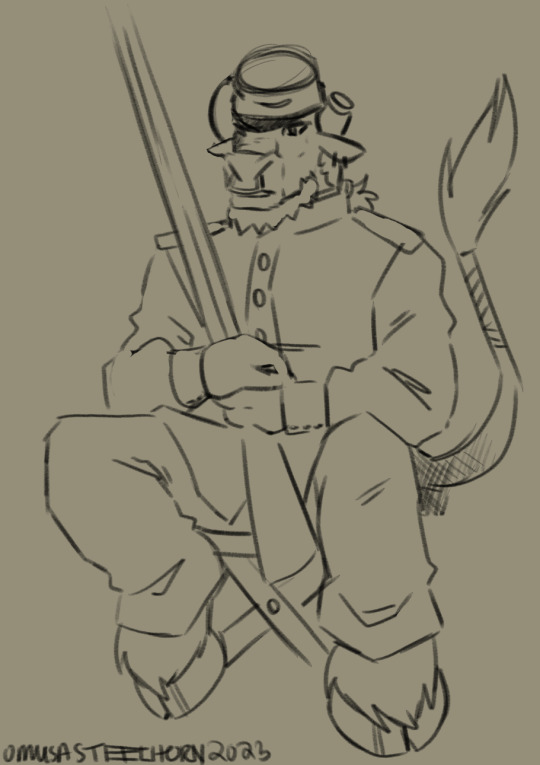
I like this rough sketch way better than the last one for this commission. Lines and colors soon! I have two final versions planned for this one. Union soldier tauren.
#wow#warcraft#world of warcraft#horde#tauren#drawing#wip#sketch#union soldier#american civil war#minotaur#fantasy
5 notes
·
View notes